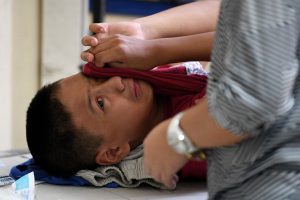Circumcision is a surgical procedure performed on males to remove the foreskin covering the tip of the penis. It is a common practice worldwide, including in the Philippines. While it can be done on newborns, circumcision is most often performed on boys aged 9-13 as a rite of passage marking their transition to adolescence.
Why is Circumcision Performed?
Circumcision has deep cultural roots and varies across different societies. It is traditionally practiced in Jewish and Muslim communities, as well as among certain indigenous tribes in Africa and Australia. In some families, the procedure is passed down as a tradition from generation to generation. Additionally, circumcision is often linked to maintaining personal hygiene and, in some cases, is medically recommended.
Benefits of Circumcision

Circumcision offers several benefits, particularly in terms of health and hygiene. These include:
- Improved personal hygiene. Circumcised males find it easier to clean the penis, particularly the area previously covered by the foreskin, reducing the risk of infections.
- Lower risk of urinary tract infections (UTIs). Studies show that circumcised males are less likely to experience UTIs.
- Reduced risk of sexually transmitted diseases (STDs). Research indicates that circumcision lowers the likelihood of contracting STDs, including HIV.
- Prevention of penile issues. Conditions such as phimosis, where the foreskin is too tight to retract, can lead to inflammation and discomfort. Circumcision reduces the risk of such conditions and may also lower the risk of penile cancer.
Does Circumcision Affect Fertility or Sexual Function?
While circumcision has its benefits, it is not medically necessary if the foreskin can retract normally. Additionally, there is no evidence that circumcision impacts a male’s ability to conceive or affects sexual performance. The procedure is purely optional unless required for specific medical reasons.
Risks of Circumcision
Circumcision, like any surgical procedure, carries some risks. The most common issues include:
- Infections or severe wounds. This risk is particularly high when circumcision is performed using traditional methods, such as the “de-pukpok” method common in the Philippines. This technique, often conducted in non-sterile environments by untrained individuals, can lead to infections or severe complications such as tetanus.
- Bleeding or scarring. Improper procedures can result in excessive bleeding or noticeable scarring.
- Post-operative pain. Some discomfort is expected, though this can usually be managed with proper care and medications.
The Department of Health (DOH) in the Philippines strongly discourages traditional circumcision methods and advocates for safer, medical approaches.
Where Can Boys Undergo Circumcision?

Circumcision can be performed in hospitals or medical clinics throughout the year. Additionally, many government and private organizations in the Philippines conduct free circumcision programs, especially during April and May. These programs are typically carried out by doctors, medical students, and nurses, ensuring a safer and more hygienic procedure.
Circumcision is a widely practiced procedure with cultural, hygienic, and medical significance. While it offers various health benefits, it is not mandatory for everyone and should be approached with proper understanding and consideration. If you are considering circumcision for your child or yourself, consult a medical professional to discuss the risks, benefits, and the most appropriate method for your needs.


